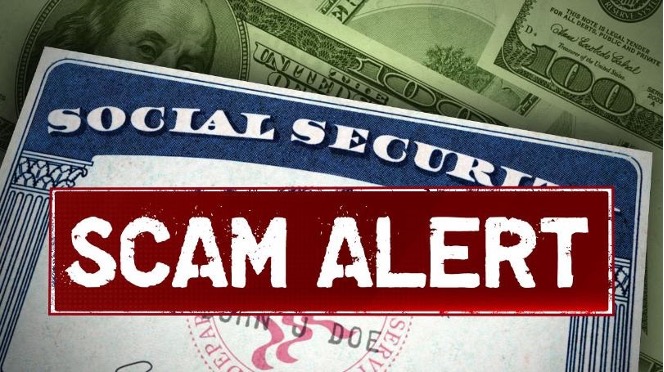
Social Security is a lifeline for millions of Americans—but it’s also a prime target for scammers. From impersonation schemes to fake cost-of-living adjustment (COLA) offers, fraudsters are constantly evolving their tactics to exploit trust and confusion around this vital program.
Whether you’re nearing retirement or simply want to protect your identity, understanding these scams is the first step toward staying safe.
SEVEN COMMON SOCIAL SECURITY SCAMS
1. FAKE COST-OF-LIVING ADJUSTMENT (COLA) SCAMS
Scammers often prey on seniors by promising a COLA increase –sometimes claiming you need to “opt in” or provide personal information to receive it. In reality, COLA increases are automatic and require no action from beneficiaries.
Red flags:
• Emails or calls asking for your Social Security number to “activate” a COLA
• Promises of unusually large benefit increases
• Requests for payment to process your adjustment
2. IMPERSONATION CALLS FROM “SSA AGENTS”
One of the most widespread scams involves fraudsters posing as Social Security Administration (SSA) officials. They may claim your number has been suspended or that you’re under investigation.
Tactics include:
• Threats of arrest or legal action
• Requests for payment via gift cards or cryptocurrency
• Spoofed caller IDs that appear to be from government agencies
The SSA will never threaten you or demand payment over the phone.
3. OVERPAYMENT RECOVERY SCAMS
Sometimes, legitimate overpayments do occur, but scammers exploit this by falsely claiming you owe money to the SSA. They’ll ask you to “repay” the amount using untraceable methods.
Legit SSA overpayment notices:
• Are sent by mail
• Never request payment via Venmo, gift cards, or wire transfers
If you’re unsure whether a notice is real, contact the SSA directly.
4. TAX-RELATED SOCIAL SECURITY SCAMS
While Social Security benefits may be taxable depending on your income, scammers use this complexity to their advantage. They might claim you owe back taxes on your benefits or offer to “help” you avoid taxes – for a fee.
Watch out for:
• Promises to eliminate taxes on Social Security
• Fake IRS or SSA agents demanding payment
• Offers to move your money to a “protected account”
Always verify tax-related claims with the IRS or SSA before taking action.
5. FAKE BENEFIT APPLICATION PORTALS
Scammers create websites that mimic the SSA’s official site to trick users into entering sensitive information. These sites may appear in search results or be linked in phishing emails.
How to spot a fake:
• URLs that don’t end in .gov
• Poor grammar or formatting
• Requests for payment to “expedite” your application
Always use: ssa.gov for official Social Security services.
6. REQUESTS FOR INFORMATION UPDATES
You might receive a call, email, or text asking you to “confirm” your Social Security Number (SSN) or banking details. These are classic phishing attempts.
Legitimate SSA communications rarely ask for sensitive information via phone or email and will never ask for your full SSN over unsecured channels. If in doubt, ignore the message and contact the SSA directly.
7. FAKE DOWNLOADS AND SECURITY UPDATES
Some scams involve emails asking you to download a “security update” to fix errors in your Social Security record. These downloads often contain malware designed to steal your data. The SSA will never ask you to download software or click on suspicious links.
WHAT TO DO IF YOU’RE TARGETED OR SCAMMED
1. REPORT THE SCAM.
File a report with the SSA Office of the Inspector General at: ssa.gov/scam. You can also report to the FTC via: reportfraud.ftc.gov.
2. REPLACE YOUR SOCIAL SECURITY CARD (IF COMPROMISED).
If your card was stolen or your number exposed, you may need a replacement. Here’s how to get a Social Security card replacement:
• Visit: ssa.gov/ssnumber.
• Create a “my Social Security” account to apply online.
• Alternatively, complete Form SS-5 and submit it by mail or in person.
You’ll need original documents proving your identity, age, and citizenship.
3. PROTECT YOUR IDENTITY.
To safeguard your personal information after a Social Security scam—or as a proactive measure—it’s essential to take steps that limit further exposure. Start by freezing your credit with the three major bureaus: Equifax®, Experian®, and TransUnion®. This prevents new accounts from being opened in your name without your consent. Next, keep a close eye on your bank accounts and credit reports for any suspicious activity or unauthorized transactions. Regular monitoring through your bank or credit union’s Online Banking or mobile app platforms can help you catch fraud early.1 For added protection, consider enrolling in an identity theft protection service, which can offer alerts, recovery assistance, and insurance coverage in case your information is misused.
4. CONTACT THE IRS (IF TAX SCAMS ARE INVOLVED).
If you received suspicious tax-related communications, reach out to the IRS directly at: irs.gov or call: 1 (800) 829-1040.
Social Security scams are relentless. However, with awareness and caution, you can stay one step ahead. Always verify communications, guard your personal information, and remember: If something feels off, it probably is.






